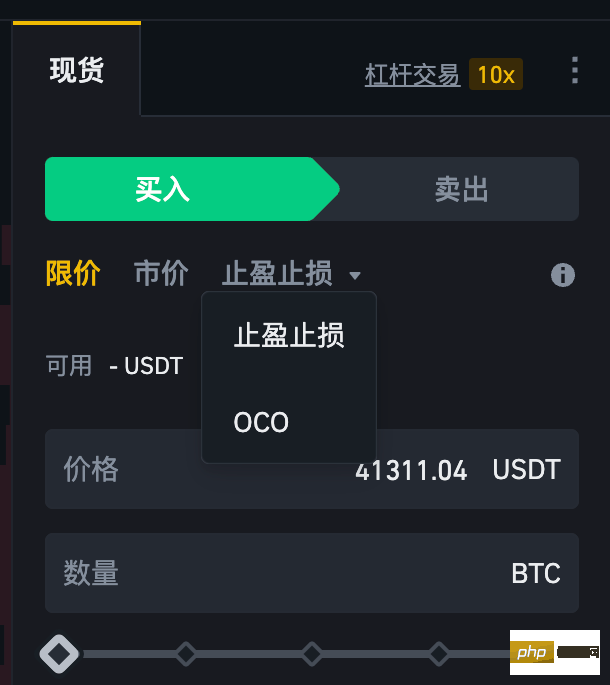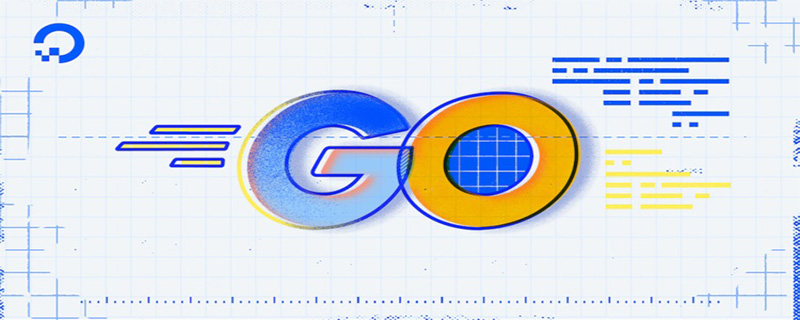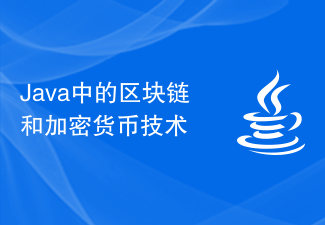 web3.0
web3.0 Parallel EVM+ Driver: Exploring Blockchain's Unlimited Scalability and Large-Scale Application Implementation
Parallel EVM+ Driver: Exploring Blockchain's Unlimited Scalability and Large-Scale Application Implementation
Author: YBB Capital Researcher Ac - Core
Foreword:
EVM is an advanced model specifically designed to promote Ethereum Virtual Further development of the machine to better adapt to the rapidly changing encryption field. In this model, as the innovation and productivity of Web2 are gradually integrated into Web3, real-world technologies such as artificial intelligence, DePIN and DeFi security are also rapidly integrated into crypto applications. EVM provides a brand-new solution that not only promotes the development of large-scale applications but also accelerates the integration of cryptocurrency into mainstream applications by seamlessly integrating EVM assets, protocols, and infrastructure. It enhances the scalability of the blockchain by implementing native extensions on the EVM WASM chain, and further optimizes the processing capabilities of the blockchain by supporting parallel EVM execution.
According to Techandtips123, parallel EVM is like the division of labor when organizing a party. Suppose you need to prepare for a move and let everyone perform their duties: A is responsible for transporting bulky luggage, B is responsible for transporting valuables, C is responsible for moving items, and D is responsible for the sanitary layout of the new site. This division of labor allows the entire work to be completed by four people, greatly saving time and improving efficiency.
The concept of parallel EVM is similar, by allocating computing tasks to multiple execution units. In the Ethereum network, many participants process different transactions simultaneously, and each transaction acts like an independent task, such as transferring money or generating new tokens. Each participant works independently on a task on the EVM, just like an independent computer program running on the blockchain. Once completed, the results of these tasks are aggregated back into the network and form the final block. When a single executor cannot handle a large number of transactions independently, the speed decreases and the difficulty of use increases. Parallel EVM was introduced to solve this problem. By allowing multiple executors to process different transactions at the same time, the network is able to process more transactions faster, reducing congestion and related costs.
The idea of introducing a new “layer”:

Image source: Artela — From EVM to EVM
Pointed out by Vitalik Buterin : "L2 is for scaling, and L3 is for custom features such as privacy protection. In this vision, no one is trying to provide 'scalability squared'; instead, there is one layer in the stack that helps applications scale, and another Layers are used to meet customized functional requirements for different use cases. "Layers" that address non-scaling requirements clearly play an important role in Vitalik's vision for Ethereum. His point underscores the need for blockchain networks to support “custom functionality.” For Ethereum, the way to meet this need may be to build a new layer, while Artela adds "native extensions" on top of the base layer.
As far as blockchain is concerned, functionality refers to the ability to support various applications. The Ethereum Virtual Machine (EVM), as a runtime engine that supports smart contracts, is the mainstream model for creating DApps to implement functions. EVM was originally proposed by Ethereum and has now been adopted by many smart contract chains, often called EVM-enabled chains or EVM-equivalent chains. However, current EVMs have proven to be limited in supporting the extended functionality of DApps. The key challenge is how to expand the functional boundaries in the EVM chain. In practice, there are two directions for improvement:
- Replace EVM with a better virtual machine;
- Strengthen EVM with supplementary extensions.
The first method circumvents the limitations of EVM, but requires giving up EVM-based smart contracts. MoveVM and FuelVM are examples of this implementation. While more advanced virtual machines may be needed in the future, it will take quite some time for them to reach the same level of maturity and popularity as EVMs.
The second approach is to introduce a new stack that enhances EVM by "extending" it. The purpose of this is to push the functional limits of the EVM beyond its original specification while maintaining EVM equivalence. This approach is to enhance DApp functionality on top of existing EVM infrastructure. Exploring EVM enhancements opens the door to exciting possibilities and continued innovation in DApp functionality, leading to significant emerging innovations.
Artela:
EVM in Artela Network
Artela’s mission is to create a base layer blockchain network to meet the needs of large-scale decentralization The growing demand for centralized applications. Artela’s innovative design allows developers to create native extensions on top of the blockchain’s base layer in a modular fashion, increasing the programmability of the blockchain. This approach will help developers implement custom functionality in a lightweight and dynamic way, opening the door to faster innovation and more possibilities.
Artela has an extension layer that allows the addition of native user-defined extension modules called Aspects, improving programmability while ensuring compatibility with existing EVM smart contracts. Aspect allows developers to inject additional logic throughout the transaction lifecycle outside of smart contracts to handle transactions and related blocks.
Artela has established a highly scalable EVM network, using Aspect programming (see extension link 1) to introduce WASM virtual machines on the EVM-compatible network. These virtual machines can operate with each other to achieve on-chain expansion. Dynamic addition and execution of programs. EVM enables developers to build high-performance protocols, modular DApps, and customize underlying functionality for specific scenarios.

Picture source: Artela official
During DevNet and Public Testnet, Artela jointly developed with developers in the community to explore the potential of the EVM network, and was developed by This results in imaginative use cases:
- Utilizing WASM as an on-chain co-processor to facilitate the execution of AI agent algorithms and other high-performance modules directly on the blockchain while ensuring compatibility with the EVM Seamless interoperability of the system;
- On-chain AI agents that participate in autonomous worlds, enabling truly programmable on-chain NPCs that can interact with users;
- On-chain options for real-time execution Security module that allows DeFi protocols to instantly identify and recover suspicious transactions.
A new era is coming that can fully realize on-chain protocols, artificial intelligence, and secure DeFi while maintaining compatibility and interoperability with the EVM world.
From EVM to EVM
Artela’s vision is to build an infinitely scalable network. EVM is not the end goal but a starting point. The next step for Artela is EVM, a parallel EVM network that can unleash the full potential of scalable blockchains. EVM unlocks the scalability of EVM, designed to adapt to the new crypto world, where the productivity and innovation of Web2, as well as practical technologies such as artificial intelligence, DePIN and fintech, are rapidly being integrated into DApps. EVM unlocks the scalability of EVM, enabling this highly creative network to further promote the large-scale application of DApps and accelerate the integration of cryptocurrencies into mainstream applications.
EVM Parallel Resilient EVM Network
Artela’s Parallel EVM will be implemented in two phases.
The first phase involves executing transactions in parallel under the EVM. Artela's network not only implements basic parallel EVM, but also solves the problem of parallel execution under the EVM Aspect, an extension that runs on the WASM virtual machine and can be called during the life cycle of a transaction.
In the second phase, Artela will leverage parallel capabilities and combine it with elastic computing to implement elastic block space, a dynamic mechanism that allows DApps to maximize the benefits of parallel execution.
Parallel EVM Brief Description
Artela's horizontally scalable architecture is designed around parallel execution, ensuring the scalability of network node computing capabilities through elastic computing, and ultimately achieving elasticity block space.
- Parallel execution: Transactions on Artela can be executed in parallel. The Artela network groups concurrently executed transactions based on transaction dependency conflict analysis;
- Elastic computing: The validator node supports horizontal expansion, and the network will automatically adjust the validator's computing nodes based on the current network load or subscription situation. . The expansion process is coordinated by the elastic protocol to ensure that there are enough elastic computing nodes in the consensus network;
- Elastic block space: Based on elastic computing, in addition to expanding the public block space, large-scale DApps with independent block space requirements You can also apply for dedicated flexible block space in the network.
"Elastic block space"
Elastic block space refers to dynamically expandable block space, which is used for applications with high transaction throughput requirements. DApps provide dedicated block space with protocol guarantees. By default, blocks have limited public block space capacity. When a DApp applies for independent block space, additional space will be added to the block, which only accommodates transactions related to the DApp smart contract. When the block space expands, validators need to add elastic execution nodes to expand the corresponding processing capabilities.
Elastic block space is an expansion mechanism for blockchain that enables unlimited expansion while maintaining interoperability. Scalable networks such as sharded blockchain, application chain network, and Layer2 can also provide independent block space, but isolation and block generation are not synchronized. Elastic block space allows DApps with independent block spaces to interact synchronously through atomic transactions in the same block, avoiding the need for asynchronous cross-chain communication.
When a DApp in the Artela Network requires high scalability, it can subscribe to elastic block space to handle increases in throughput. Elastic block space and native scaling provide scalability and customization capabilities for DApps in Artela.
Artela uses local extensions to enhance DApp functions
By leveraging Aspect programming, developers can create local extensions (see extension link 2) to add custom functions on top of all blockchain base layers Incorporate into DApp and combine with existing EVM smart contracts to enhance the functionality of DApp.
Source author: Joshua Esin
1. Enhance scalability:
In Artela, One of the strengths of Aspect programming is its unparalleled scalability. Traditional smart contracts tend to be limited in modifying or extending functionality. Artela's Aspect programming overcomes this obstacle by providing a modular and extensible framework. Developers can seamlessly extend the functionality of existing contracts without modifying their core logic. This scalability paves the way for more agile and scalable dApp development.
2. Improved Security:
In the ever-evolving world of blockchain security, Artela’s Aspect Programming introduces a paradigm shift. Unlike traditional white-box security measures, Aspect Programming provides a complementary black-box security solution. Real-time monitoring, proactive risk mitigation, and runtime behavioral analysis help build a strong security framework that prevents vulnerabilities and ensures protocol continuity.
3. On-chain intent solver:
Artela’s Aspect Programming introduces the revolutionary concept of on-chain intent solver. Traditionally users need to specify detailed function calls to execute transactions. With on-chain intent solvers, users can express the desired results in human-readable language, resulting in a more intuitive and customizable experience. For example, a user can specify their intent as "Exchange X ETH for Y USDC", eliminating the need to call complex functions.
4. Just-in-time (JIT) operation:
JIT operation is a powerful concept widely used in various scenarios. It is obtained through the concept of Artela's Aspect Programming. flexibility. Executing on-chain logic during the block lifetime and combining it with smart contracts in atomic transactions opens the possibility for JIT liquidation, JIT LP management, and MEV capture AMM strategies.
5. Local event-driven actions:
Native event-driven operations in Artela enable users to subscribe to real-time on-chain events and trigger atomic tasks. This feature helps maintain consistency of on-chain and off-chain states, enables asynchronous cross-chain message notifications, and enhances blockchain automation.
6. Full-chain games:
Artela’s Aspect Programming extends its influence to the gaming field, providing developers with ways to enhance the programmability of in-game assets. tool. With Artela, gaming device NFTs can be upgraded with programmability, ushering in a new era of versatile user experiences in the gaming ecosystem.
7. OnChain MicroServices:
Artela is able to create public on-chain services on the blockchain network, promoting the collective maintenance and governance of different users and organizations. This model promotes resource sharing, collaborative innovation, reduces development obstacles, and contributes to the development of the decentralized financial ecosystem.
Built-in "functional layer" of decentralized networks: improving blockchain capabilities.
Artela's programming model introduces a built-in "functionality layer" to the blockchain network without the need for third-party networks or complex off-chain systems. This functional layer extends the native functionality of the base layer, including security protection, custodian functions, automation, and off-chain synchronization. The integration of this functional layer marks a leap forward in protocol development and user experience for decentralized networks.
Conclusion
The basic technology of Web3 is the public blockchain, which was first introduced to the world by Satoshi Nakamoto’s Bitcoin network, and later its functions were greatly expanded by smart contract platforms such as Ethereum. . Some people think of blockchain as a decentralized data network, a distributed ledger technology. In fact, it is much more than just the data level.
Blockchain is more like a computer than a ledger or database, and the challenge we face today is how to design a better computer. The Artela blockchain is built on the basis of the Cosmos SDK and has made many improvements at the engine level. Secondly, Artela is compatible with E VM. The innovation is the introduction of Aspect Programming to achieve on-chain expansion. In addition to E VM, Artela has also added a second WASM-based virtual machine to support multiple programming languages (assembly script, rust, C, C) and can access more on-chain resources, so E VM is suitable for general purpose smart contracts, while Aspect VM is suitable for application-specific extensions.
Extension link:
(1)https://docs.artela. network/main/Aspect-Programming/Aspect (Aspect official explanation)
(2)https://docs.artela.network /Core-Concepts/Chain-Native-Pattern (Using Aspect programming native extension)
The above is the detailed content of Parallel EVM+ Driver: Exploring Blockchain's Unlimited Scalability and Large-Scale Application Implementation. For more information, please follow other related articles on the PHP Chinese website!
 区块链只能用go语言吗Dec 27, 2022 pm 05:25 PM
区块链只能用go语言吗Dec 27, 2022 pm 05:25 PM不是。区块链是一种编程思想,原则上使用任何一种编程语言都可以实现,比如Solidity、C++、C#、Java、javascript、Go都可以实现区块链的开发;区块链技术涉及的面很广,而编程语言只是一种手段,把设计理念用代码呈现出来,做成产品服务用户。
 什么是OCO订单?Apr 25, 2023 am 11:26 AM
什么是OCO订单?Apr 25, 2023 am 11:26 AM二选一订单(OneCancelstheOther,简称OCO)可让您同时下达两个订单。它结合了限价单和限价止损单,但只能执行其中一个。换句话说,只要其中的限价单被部分或全部成交、止盈止损单被触发,另一个订单将自动取消。请注意,取消其中一个订单也会同时取消另一个订单。在币安交易平台进行交易时,您可以将二选一订单作为交易自动化的基本形式。这个功能可让您选择同时下达两个限价单,从而有助于止盈和最大程度减少潜在损失。如何使用二选一订单?登录您的币安帐户之后,请前往基本交易界面,找到下图所示的交易区域。点
 go语言能开发区块链吗Jan 03, 2023 pm 01:41 PM
go语言能开发区块链吗Jan 03, 2023 pm 01:41 PM可以开发。区块链是一种编程思想,原则上使用任何一种编程语言都可以实现,比如go语言、Solidity、C++、C#、Java、javascript都可以实现区块链的开发。Go语言是为了解决分布式计算,而区块链是典型的分布式数据存储系统,因此go语言能开发区块链。且Go易学易用,能很好的满足区块链行开发需要的“执行效率高、高并发、跨平台,网络开发要求高”等特点。
 为什么用go语言写区块链Mar 04, 2021 pm 03:42 PM
为什么用go语言写区块链Mar 04, 2021 pm 03:42 PM原因:1、Go语言具有部署简单、性能优秀、并行执行性能好、良好语言设计、内置大量库、团队牛逼等优势。2、以太坊和超级账本都选择使用Go作为开发语言;这两大超级区块链的影响力很大,不仅在生态中占据了大的坑位,事实上还隐性的制定了区块链的标准。
 深入学习区块链的Go语言开发框架Jun 04, 2023 pm 08:01 PM
深入学习区块链的Go语言开发框架Jun 04, 2023 pm 08:01 PM区块链技术的出现,使得数字货币的应用成为可能,也在许多领域得到了广泛应用。随着区块链技术领域的扩大,开发人员对于更好的应用程序编写方式的需求也高涨起来。于是,一个叫做Go语言(简称Golang)的编程语言悄悄兴起,成为了区块链开发人员的最爱。Go语言是谷歌公司开发的一种系统级编程语言,自诞生以来,一直着重强调程序设计的简捷和高效。Go语言的优点包括:静态类型
 Java 中的区块链和加密货币技术Jun 09, 2023 am 09:56 AM
Java 中的区块链和加密货币技术Jun 09, 2023 am 09:56 AMJava是一种广泛使用的编程语言,它被许多公司和组织用作开发各种应用程序的工具。最近几年来,区块链和加密货币技术在全球范围内引起了大量的关注。Java的灵活性和多功能性使得它成为开发区块链和加密货币应用程序的优秀选择。区块链技术是一种安全的、去中心化的数据库,它可以存储和共享交易记录,而无需任何中央机构的干涉。Java提供了许多区块链开发框架,例如H
 打造高效的区块链技术开发环境(使用Go语言)Jun 05, 2023 am 08:21 AM
打造高效的区块链技术开发环境(使用Go语言)Jun 05, 2023 am 08:21 AM随着区块链技术的发展和应用越来越广泛,有越来越多的人开始参与到区块链技术的开发中来。而要想打造高效的区块链技术开发环境,选择合适的开发语言和工具是非常重要的。Go语言正是一个很好的选择,因为它的性能很高,同时还有很多优秀的开源工具和库,能够大大提高开发效率。下面就来介绍一下如何打造高效的区块链技术开发环境,使用Go语言进行开发。一、选择Go语言在选择开发语言
 如何利用Go语言实现全球唯一的区块链身份标识Jun 04, 2023 pm 03:51 PM
如何利用Go语言实现全球唯一的区块链身份标识Jun 04, 2023 pm 03:51 PM区块链是一种去中心化的分布式账本技术,随着其应用领域的不断扩展,如何保障区块链参与者的身份安全问题也逐渐成为热门话题。本文将介绍如何利用Go语言实现全球唯一的区块链身份标识。一、为什么需要区块链身份标识在现有的互联网世界中,身份验证是一个非常重要的问题。通过用户名和密码等方式,用户可以登录到我门的网站上,从而使用我们的服务。但是,在互联网上,身份验证存在着

Hot AI Tools

Undresser.AI Undress
AI-powered app for creating realistic nude photos

AI Clothes Remover
Online AI tool for removing clothes from photos.

Undress AI Tool
Undress images for free

Clothoff.io
AI clothes remover

AI Hentai Generator
Generate AI Hentai for free.

Hot Article

Hot Tools

Safe Exam Browser
Safe Exam Browser is a secure browser environment for taking online exams securely. This software turns any computer into a secure workstation. It controls access to any utility and prevents students from using unauthorized resources.

SublimeText3 Mac version
God-level code editing software (SublimeText3)

Atom editor mac version download
The most popular open source editor

PhpStorm Mac version
The latest (2018.2.1) professional PHP integrated development tool

VSCode Windows 64-bit Download
A free and powerful IDE editor launched by Microsoft







